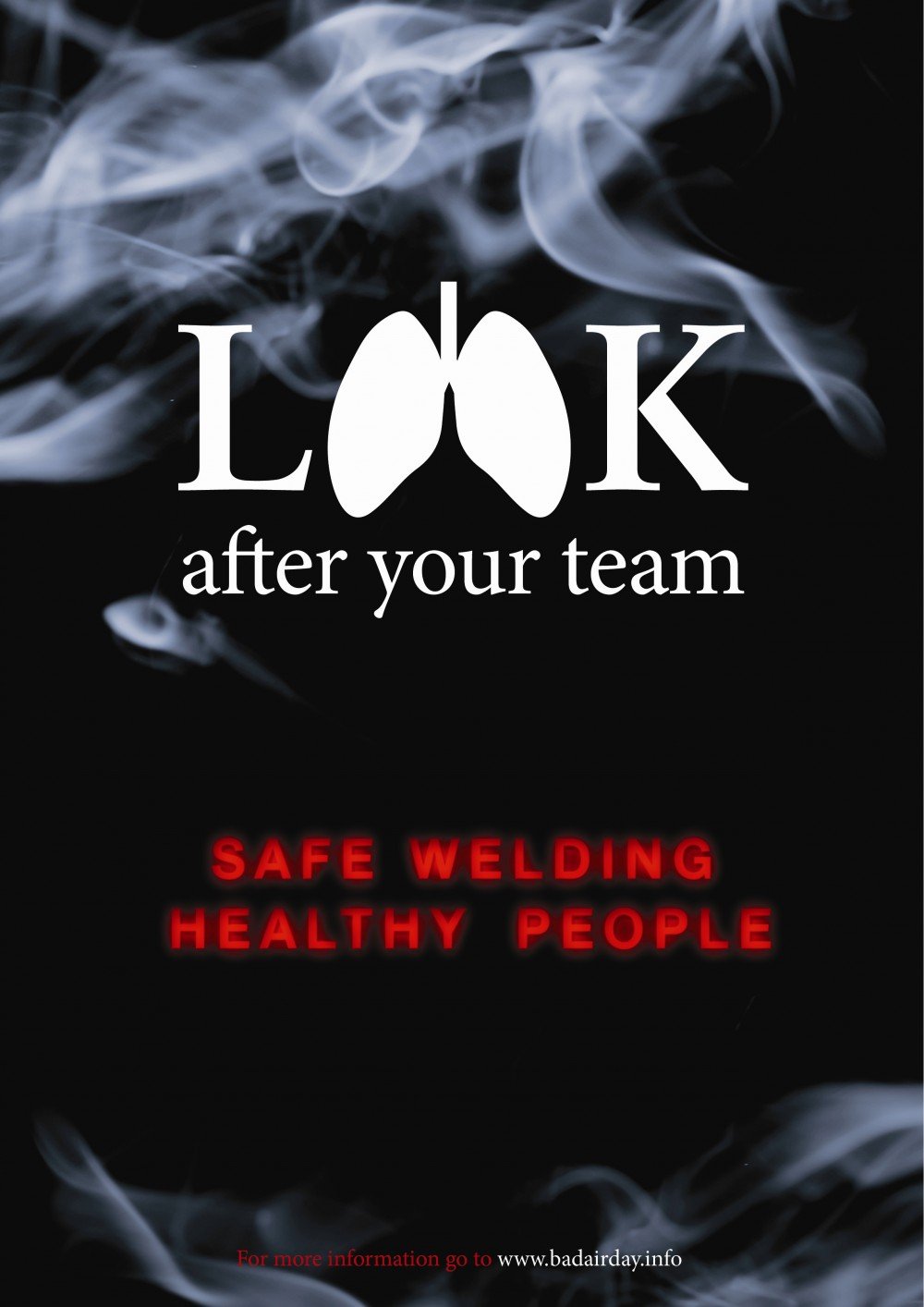
Exposure to welding fume can have a significant effect on health. Carole Daley explains what the Welding Fume Team is doing to raise awareness of the dangers and give welders better protection.
We all know that fume generated when welding can be dangerous, and that exposure to welding fume can lead to severe health problems. Or do we? Is the message getting through to the people who need to know?
To help tackle the lack of awareness in many sectors, the Welding Fume Team (WFT) was established in 2010. The aim was to bring together a group of influential stakeholders who could work together to raise awareness of the respiratory hazards of fume from welding and thermal cutting applications. The long-term aim is to encourage a change in behaviour to ensure all those potentially exposed to these fumes are better protected.
The dangers of breathing in fume and the respiratory health effects it may cause when inhaled are not as widely known as they should be.
Health effects associated with exposure to welding fume include occupational asthma, lung cancer, and pneumonia. It can take a long time for some of these harmful effects on the respiratory system to become apparent and, by then, it may be too late to prevent serious illness or even death.
Welding is a diverse activity and takes place across many sectors. It is, therefore, a challenge to make all those involved in these activities aware of the dangers of fume and how to control exposure to it.
The WFT has a broad membership with representatives from across a range of interests including employer and employee representatives, suppliers of consumables and control equipment, HSE and training bodies. Its members have equal responsibility for making decisions and progressing actions. Knowledge and resources are shared and if a gap is discovered, the group may decide to work together to remedy this by producing new resources – for example a hazard information pack for those learning to weld.
The team provides a source of practical and technical expertise and offers direct access to those who weld via manufacturing and training organisations, trade unions or retail suppliers. Members are in the unique position of knowing how to reach welders at work; at college; via the website; and through trade magazines and associations. The team members select and agree to prioritise specific actions, driving them forward outside meetings.
Since 2010, the WFT has been focussing on several activities to help raise awareness including:
- Contribution to the delivery of several fume focus events/safety and health awareness days (SHADS), throughout the UK.
- Production of a hazard information pack (HIP), which is intended to inform the workforce, and demonstrate standards of training and experience gained by employees throughout their career.
- Launch of the “badairday” website (see below) to provide a resource and links to further information on the respiratory health risks from exposure to welding and thermal cutting fume, and appropriate methods of controlling exposure.
- Contribution to the delivery of HSE’s welding vocational educational training tool – a tutor toolbox that promotes discussion on long-term respiratory health effects of welding and how to reduce them. It contains presentations, learning activities, digital resources, and other sources of information.
- Creating original welding fume visuals to highlight key respiratory health and safety messages for display in the workplace.
- The British Compressed Gases Association (BCGA) technical information sheets 15 and 24.
The WFT will continue to work towards increasing awareness of the dangers of welding fume to respiratory health.
As one group member commented recently, “(the group’s) real value is to ensure that there are retired and healthy welders”.
Carole Daley is manager of the Welding Fume Team
To learn more about WFT and its activities, or to contribute to its aims, visit the “badairday” website
What makes us susceptible to burnout?
In this episode of the Safety & Health Podcast, ‘Burnout, stress and being human’, Heather Beach is joined by Stacy Thomson to discuss burnout, perfectionism and how to deal with burnout as an individual, as management and as an organisation.
We provide an insight on how to tackle burnout and why mental health is such a taboo subject, particularly in the workplace.


